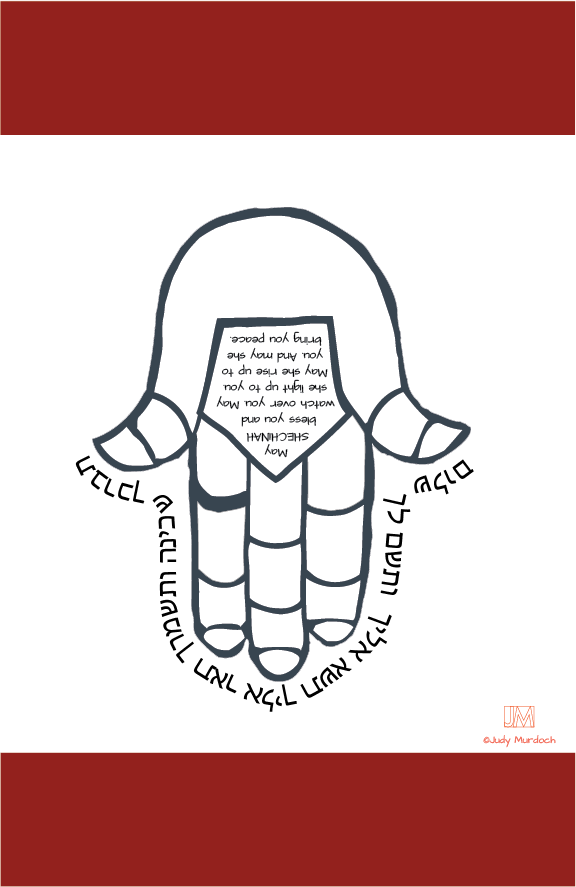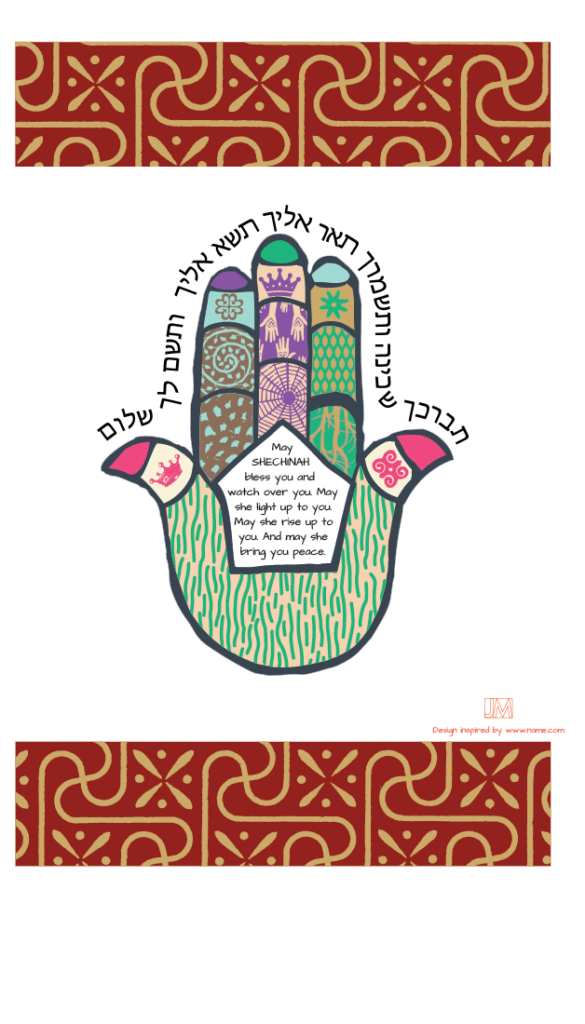This is an article in a series describing the process I use to create a practice card. The practice I’m using to illustrate this process is one to “Call Back Power.”
Now that I’ve identified the intention for the practice, in this case, I want to call back my attention and power, and come up with a list of elements for the practice, the third step is to choose a layout for the artwork.
This is one of my favorite parts of the process because the layout guides how I create the art design. It’s visual map for my work.
Here is the layout I’m using for Calling Back Power:

I look for a central image which defines the intention. In this case I choose a hamsa with the fingers pointed down. The hamsa is a protective symbol with origins in the Middle East. It has been adapted by cultures around the world and you see it used in many ways: jewelry, interior design, and clothing just to name a few.
The hamsa is depicted with the hand pointed up as well as pointing down. When the hand is pointing up, the hamsa is being used for protection. Often you’ll see an open eye in the center of the hamsa representing protection against the evil eye; warding off ill or malicious intent.
When, in this case, the hamsa is pointing down, it is being used as a vehicle for blessings and to attract what is good.
I thought about how I wanted to position the hamsa here because there is a protective element in the practice of calling back power. In any spiritual practice it’s important to set up energetic boundaries. You want to set up a boundary around yourself which allows what is good in and keeps what is not good out.
I used a protective (upwards pointing) hamsa in another practice, Empowerment:

The Empowerment practice asks that any negative emotions and physical sensations which do not belong to us to be removed from our circle. Empowerment is all about setting strong boundaries because we can’t heal what isn’t ours. So protection is key.
Another important design element is the blessing or invocation. Some of these blessings are traditional with an ancient heritage. Some are ones I or others have recently created. I’m currently including the blessing in Hebrew and in English. As a Jewish woman, Hebrew holds a special potency for me because it is the language spoken by my ancestors. The Hebrew alphabet is also very beautiful with each letter in the alphabet full of meaning.
Once I’ve created a layout, I have a visual map and can begin choosing specific elements for the artwork including colors, patterns, and symbols. I’ll use these elements to “paint” the spaces in the layout.

One thought on “3. Process: Creating the Layout”